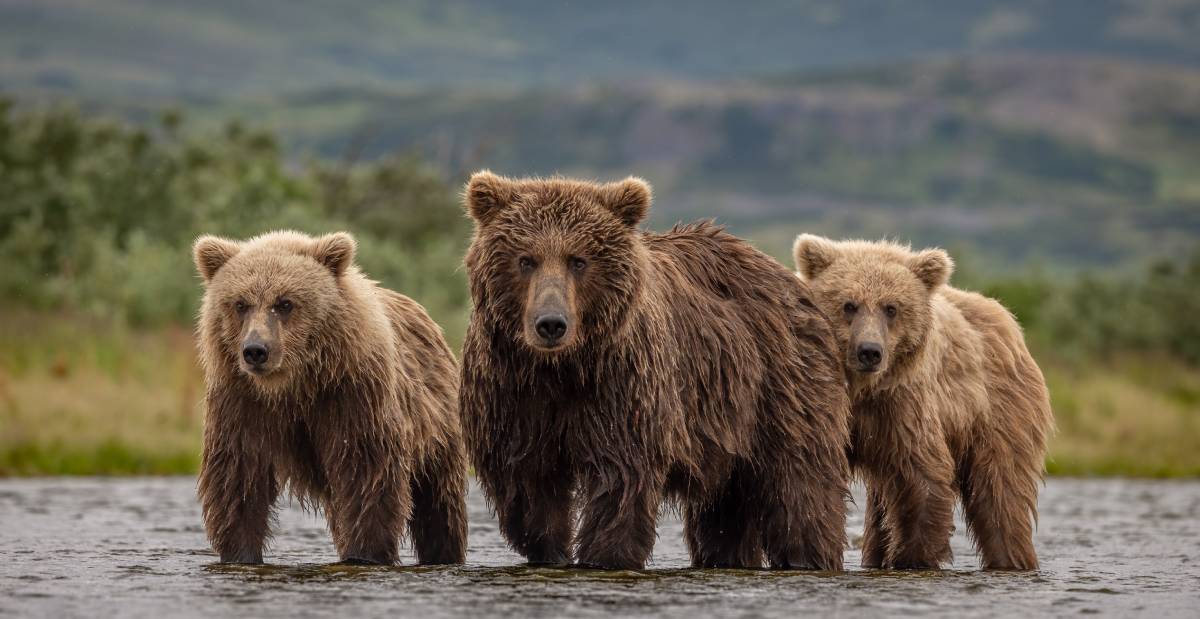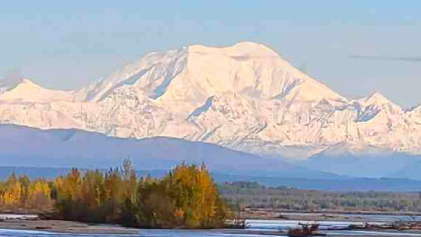Alaska Bear Adventures At Brooks Falls
Download Travel Details >PRIVATE & SMALL GROUP TOURS TO THE WORLD'S BEST DESTINATIONS
Three Amazing Alaskan Vacations To Choose From!

What Kind Of Bears Can You See In Alaska?
Alaska is home to black, brown, and polar bears, which makes Alaska bear adventures a bucket-list item for many visitors! Although bears can be seen all over the state, one of the most popular places to see bears is at Brooks Falls in Katmai National Park and Preserve. Brooks Falls is home to the Alaska Peninsula brown bear, a subspecies of grizzly bear that can be found along the Brooks River each year during the annual salmon run.

5 Fun Facts About the Alaska Peninsula Brown Bear
Brooks Falls, Alaska is home to the largest population of brown bears in the state. The bears flock to areas along the Brooks River to feast during the annual salmon runs, but they can also be found throughout Katmai Park and Preserve at other key bear-viewing locations. But what makes these bears so special? Here are five fun facts about Ursos arctos gyas, or the “peninsular grizzly.”
- Alaskan Peninsula brown bears are very large, ranging from 800 to 1,200 pounds. This is mainly because food is so plentiful along the southern Alaskan coast, where feed on clams, sedge grass, and salmon during the annual salmon runs.
- Brown bears can live up to 20 - 30 years in the wild.
- Brown bears are primarily crepuscular, meaning they are most active around dawn and dusk. This allows them to take advantage of cooler temperatures and lower light to move stealthily while looking for food.
- To survive Alaska’s harsh winters, brown bears will build dens to hibernate. The bears go into their winter dens in October or November and emerge in late April or early May. Cubs are born during the hibernation period in January and February, with the mother giving birth to a litter of two or three cubs in her den.
- Brown bears are solitary by nature, although they will congregate in groups where there are plentiful sources of food, such as spawning salmon, whale carcasses, and sedge fields. The only exception is a mother bear and her cubs.
Brown Bear Viewing In Alaska
There is nothing more iconic than seeing bears at Brooks Falls during the annual salmon run. Brooks Falls is famous for its resident brown bears, who fish for salmon in the park’s many waterways to bulk up for their winter hibernation. However, it takes a little bit of planning to get to Katmai National Park and Preserve for Alaska bear adventures!
There are no roads leading into this park, so you will have to charter a float plane from Anchorage, Homer, or King Salmon to see the bears. Fortunately, there are a variety of tour operators offering half or full-day trips to Brooks Falls. If you are looking to stay longer, Brooks Lodge is available for a multi-day bear-viewing experience!
Extending your trip to Katmai National Park is a good idea if you want to see Alaska Peninsula brown bears. Park rangers often restrict the number of tourists in bear-viewing areas, which means you may have to wait to see bears at Brooks Falls, especially during peak tourist season. However, the wait is worth it! Observing these majestic creatures in their natural habitat is an unforgettable experience for most visitors.
You can, however, go bear-viewing at other less crowded areas of Katmai National Park and Preserve. Many tour companies offer Alaska bear adventures to Hallo Bay in June, Geographic Harbor in August, Swikshak Lagoon in June, and Moraine Creek in August. These remote locations are perfect for the traveler who is willing to get his feet wet hiking into the backcountry to see these magnificent creatures.
When Is The Best Time To See Bears At Katmai National Park?
As a general rule, the Alaska Peninsula brown bear hibernates from November until April, so seeing them in the wild is only possible from late April until the end of October. Bears are most active during the salmon runs when they are focused on consuming enough calories to last them through the long, cold Alaskan winter. Because the salmon run dates vary from location to location, it is important to have a guide who knows when each salmon run takes place and who can guide you to the right area at the right time!
If you are interested in seeing bears at Brooks Falls, the best time to visit is during July. That is the peak of the salmon run and visitors have reported sightings of more than 50 bears a day. You can also see bears at the falls in September, when the salmon have finished spawning and begin to die off – making it easy for the bears to gather enough calories before denning season and creating an incredible Alaska bear adventure for tourists.
A Bear-Viewing Adventure To Remember
There are many opportunities to see bears in Alaska, but the best place to see the Alaska Peninsula brown bear is at Brooks Falls! Katmai National Park and Preserve offers visitors the chance to see these incredible creatures in their natural habitat while protecting the bears as they continue their life cycle largely undisturbed from the paparazzi that visit them each year. For a once-in-a-lifetime experience, add Alaska bear adventures at Brooks Falls to your Alaska vacation itinerary!


